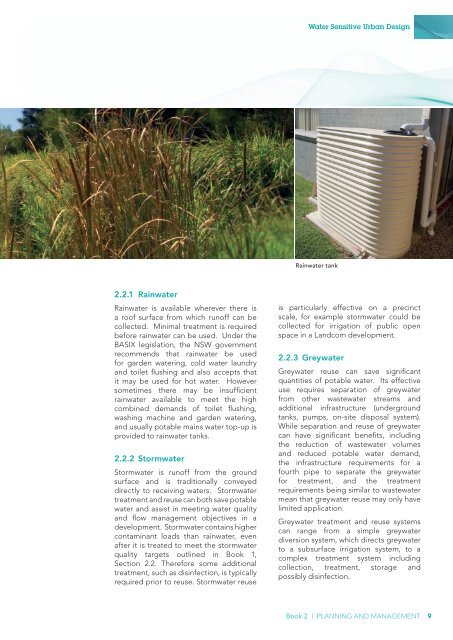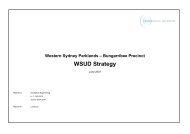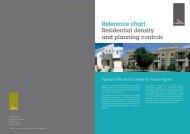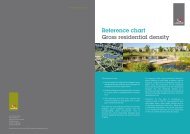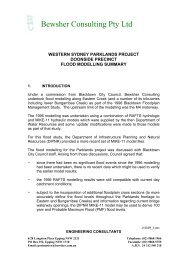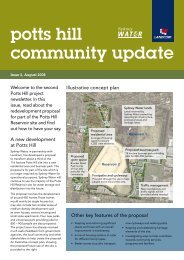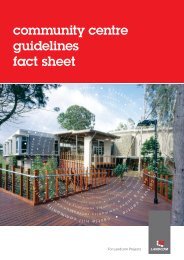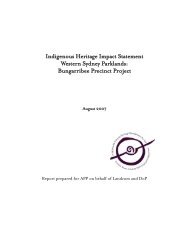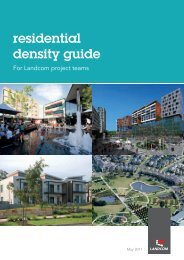Water Sensitive Urban Design
Book 2 | Planning and Management - WSUD
Book 2 | Planning and Management - WSUD
- No tags were found...
Create successful ePaper yourself
Turn your PDF publications into a flip-book with our unique Google optimized e-Paper software.
<strong>Water</strong> <strong>Sensitive</strong> <strong>Urban</strong> <strong>Design</strong><br />
Rainwater tank<br />
2.2.1 Rainwater<br />
Rainwater is available wherever there is<br />
a roof surface from which runoff can be<br />
collected. Minimal treatment is required<br />
before rainwater can be used. Under the<br />
BASIX legislation, the NSW government<br />
recommends that rainwater be used<br />
for garden watering, cold water laundry<br />
and toilet flushing and also accepts that<br />
it may be used for hot water. However<br />
sometimes there may be insufficient<br />
rainwater available to meet the high<br />
combined demands of toilet flushing,<br />
washing machine and garden watering,<br />
and usually potable mains water top-up is<br />
provided to rainwater tanks.<br />
2.2.2 Stormwater<br />
Stormwater is runoff from the ground<br />
surface and is traditionally conveyed<br />
directly to receiving waters. Stormwater<br />
treatment and reuse can both save potable<br />
water and assist in meeting water quality<br />
and flow management objectives in a<br />
development. Stormwater contains higher<br />
contaminant loads than rainwater, even<br />
after it is treated to meet the stormwater<br />
quality targets outlined in Book 1,<br />
Section 2.2. Therefore some additional<br />
treatment, such as disinfection, is typically<br />
required prior to reuse. Stormwater reuse<br />
is particularly effective on a precinct<br />
scale, for example stormwater could be<br />
collected for irrigation of public open<br />
space in a Landcom development.<br />
2.2.3 Greywater<br />
Greywater reuse can save significant<br />
quantities of potable water. Its effective<br />
use requires separation of greywater<br />
from other wastewater streams and<br />
additional infrastructure (underground<br />
tanks, pumps, on-site disposal system).<br />
While separation and reuse of greywater<br />
can have significant benefits, including<br />
the reduction of wastewater volumes<br />
and reduced potable water demand,<br />
the infrastructure requirements for a<br />
fourth pipe to separate the greywater<br />
for treatment, and the treatment<br />
requirements being similar to wastewater<br />
mean that greywater reuse may only have<br />
limited application.<br />
Greywater treatment and reuse systems<br />
can range from a simple greywater<br />
diversion system, which directs greywater<br />
to a subsurface irrigation system, to a<br />
complex treatment system including<br />
collection, treatment, storage and<br />
possibly disinfection.<br />
Book 2 | planning and management 9


